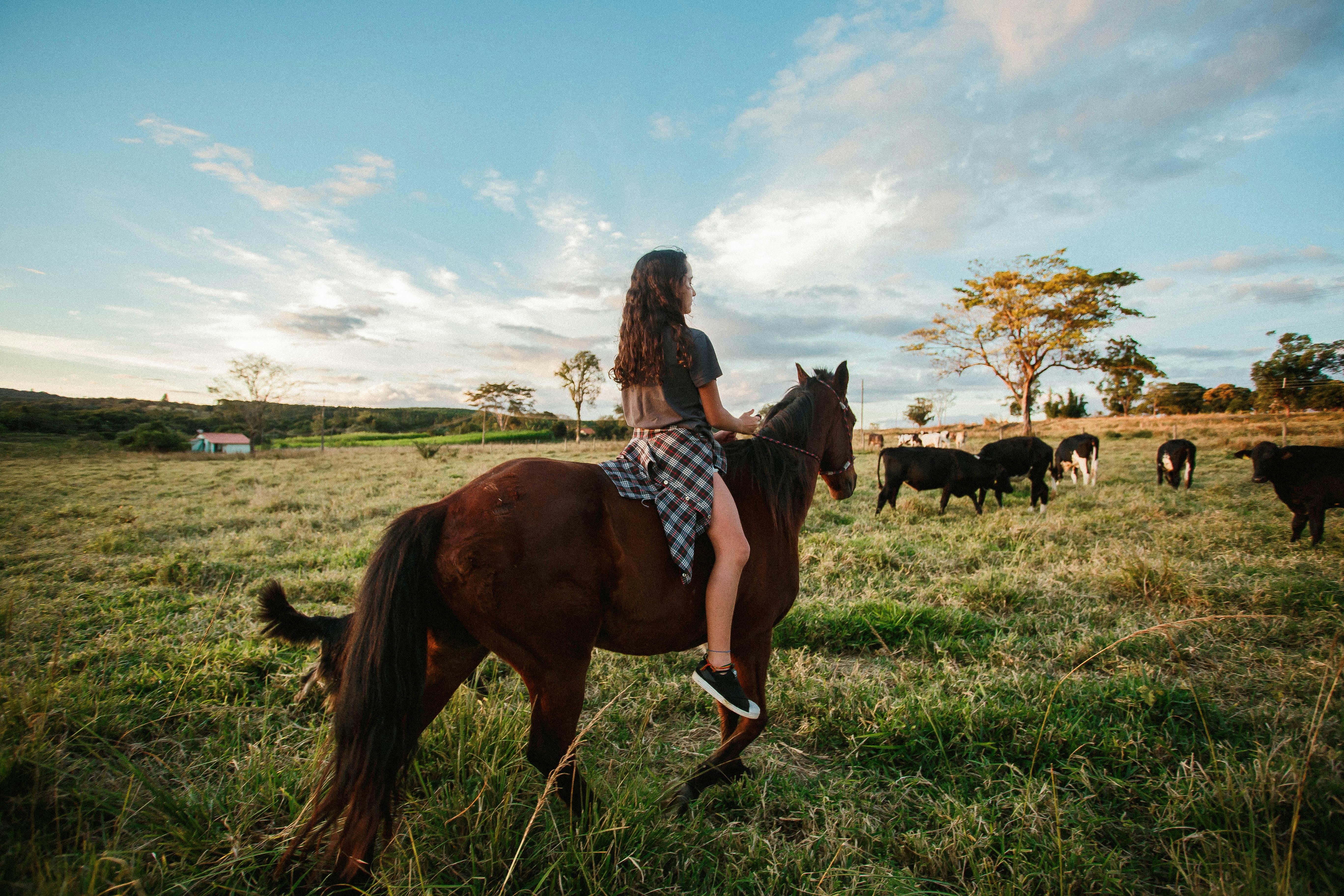In Shunga prints produced during the 17th and 18th centuries, the emphasis of the images was on the expression of arousal, lust, and love by voluntarily displaying sex by both partners. However, by the end of the 18th century, erotic images slowly changed, sometimes depicting involuntary sex, in most cases showing ugly, hairy men forcing themselves on innocent girls. The following ten rape designs (a link to images of these designs can be found at the end of the article!) are amazing examples of this specific theme:
Koryusai – Falconer
This chuban design by the great pioneer Isoda Koryusai (act. 1770-1780) of his celebrated ‘Prosperous Flowers of the Graceful Twelve Seasons’ published in 1772-1773 it was one of the first Japanese woodcuts depicting rape. The image is associated with the eighth month and depicts a falconer bringing a young girl to the ground amid grass and Japanese clover. Koryusai used a gloomy and creepy tone in the use of colors which, together with the wild clover that spiders, perfectly symbolizes the girl’s entrapment.
Hokusai – Delay
Katsushika Hokusai (1760-1849) offers a rape scene in the large oban format of quasi-comedy in his masterful series ‘Fukujuso’ (also know as ‘Making love on New Years’ Y ‘The Adonis Plant’) published ca. 1822-1823. Depicted is a clownish and obviously retarded bathhouse employee who attacks a maiden whom he has lusted after for a long time. He wears a coin in his ear, as was the custom of lackeys who did not possess a purse. A similar scene can be found in Hokusai. ‘Kino-e no komatsu’ (Pineing for love) which is somehow less comical.
kunisada – bound woman
A Horrible Scene by Utagawa Kunisada (1786-1865) ‘Spring, Summer, Autumn and Winter, Outlook for the Four Seasons’-series (late 1820s) with the female victim crucified and tied to a wooden pole with her arms tied behind her back. What enhances the drama is besides the location, somewhere deep in a forest, the fact that her tormentor has deliberately planned her violent crime leaving no way of escape.
Kunisada – Fox Fires
In another rape design Kunisada portrays three intractable palanquin carriers holding Eight, a daughter of the Karakotoya brothel owner, to the ground. The tranquil setting is the surroundings of the Kurosuke Inari Shrine. Fox-lights (fox-fires) indicate the presence of fox spirits. This book illustration is by Kunisada. ‘Shunshoku hatusne no ume’ (The erotic adventures of six women) from 1842.
Shigenobu – Gang Rape
Oban design by Yanagawa Shigenobu (1789-1833) from ‘Yanagi no arashi’ (Wind in the willows) four palanquin bearers involves struggling to restrain a frantic woman. One of the men (second from left) sports some detailed tattoos on both arms (in this image, almost invisible). The woman is kicking and resisting hard, but one gets the feeling that she might be the one in control here.
Kuniyoshi – Candle
In this famous rape scene by Utagawa Kuniyoshi (1797-1861) from the book ‘Byokei ri goyoshi ga’ (c.1830), three men in a dark room have overpowered a woman. The protagonist, who wears glasses, penetrates his victim while he is holding a candle. He is whispered among the shunga devotees that this man is actually Kuniyoshi himself.
Hokusai – Palanquin Bearers
From the shungabook series ‘Manpuku Wagojin’ (Gods of intercourse) Designed by Hokusai in 1821, this rape scene depicts two palanquin bearers (again!) ready to rape a courtesan (prostitute). The man holding her from behind has a violent grip around her neck while at the same time licking her cheek.
Utamaro – Attempted rape
In 1788, one of the most impressive early masterpieces by Utamaro (1754-1806) ‘Utamakura’ (Pillow Poem) it appeared in a series consisting of 12 horizontal album prints. The troubling misogynistic design of this set is one of the most dramatic scenes in which a commoner maiden is assaulted by a middle-aged laborer as she fights with all her might. The two protagonists are set against a dark gray background which enhances the dramatic effect.
Eiri – Footman
Chokyosai Eiri (act. 1789-1801) ‘Fumi no kiyogaki’ (Calligraphy Models), dated 1801, is considered one of the most daring oban-sized shunga games known. It contains thirteen instead of the usual twelve designs and is almost entirely inspired by Utamaro’s design. ‘utamakura’. Also this print (see Utamaro – Attempted Rape), which is, compared to the classic Utamaro, a more comedic interpretation of a middle-aged footman trying to forcibly seduce a maid from the same residence.
Hokusai – Post Rape Scene
Tea ‘Gods of intercourse’ -series concentrates on the stories of the two courtiers Osane and Otsubi who are from various social backgrounds. In this case, Osane, the daughter of a wealthy merchant, appears after a gang rape. She is alone, leaning against a tree and seems strangely satisfied with this brutal experience that is emphasized by the number of scarves that surround her. Her messy hair indicates her depraved nature and is a sign that she will meet a pitiful end. It remains one of the most intriguing rape scenes in Ukiyo-e shunga history.
The above list does not include the famous Hokusai. ‘The Dream of the Fisherman’s Wife’ -Utamaro’s Kappa rape design and design of his pillow poem -series (both of which are described in my other article “10 Evocative Erotic Shunga Woodcuts”!) because these scenes represent fantasies of the female leads involved and are not unintentional.



